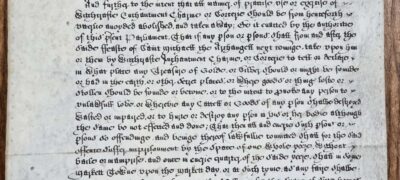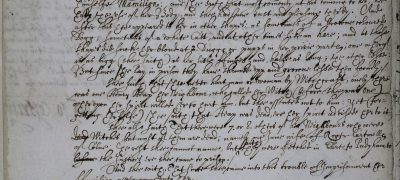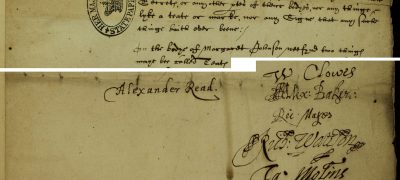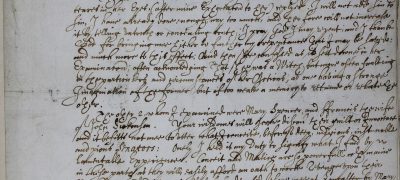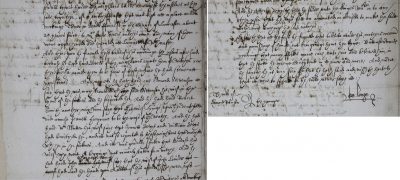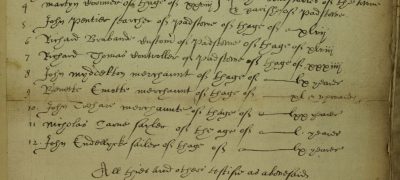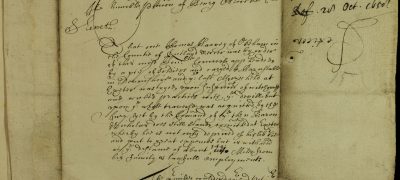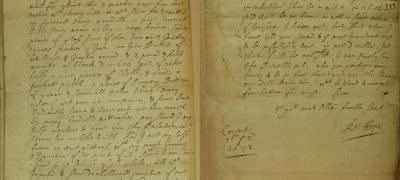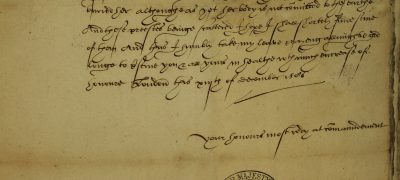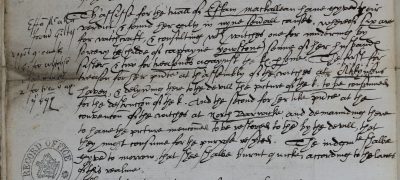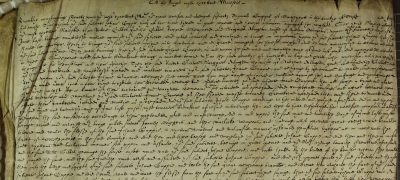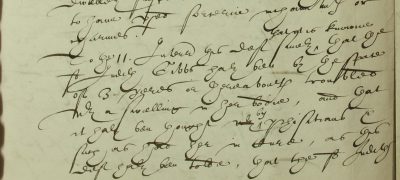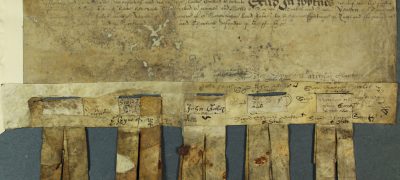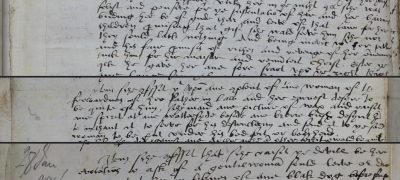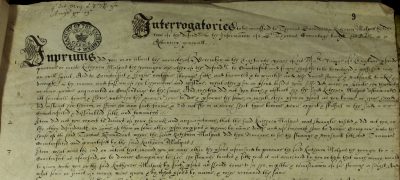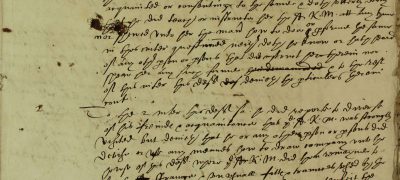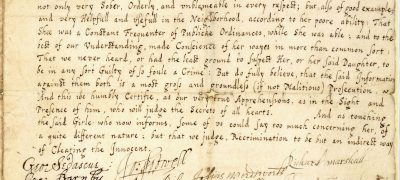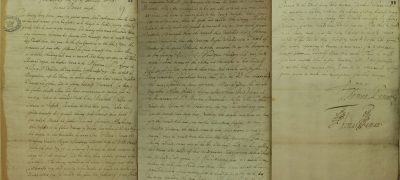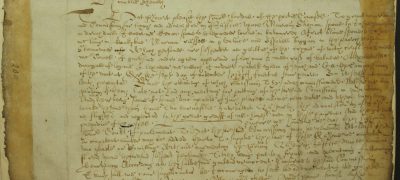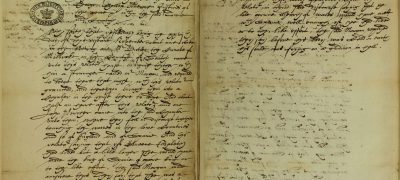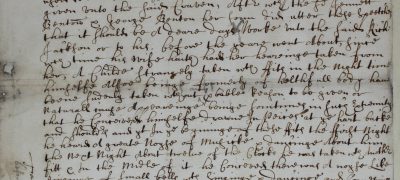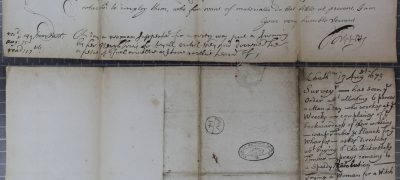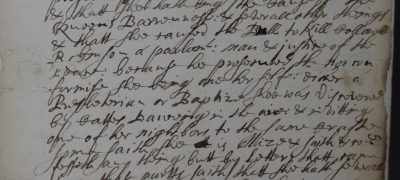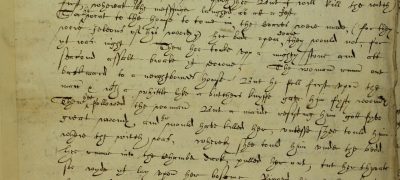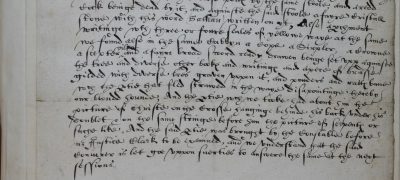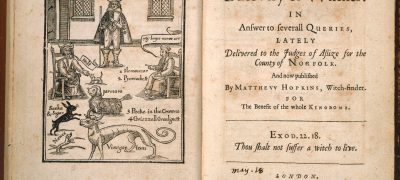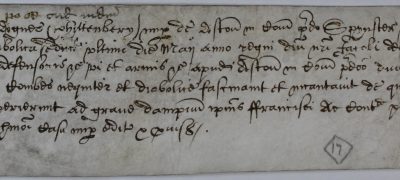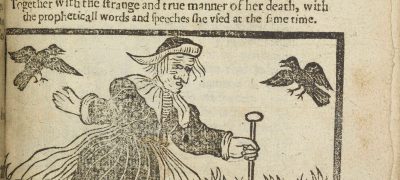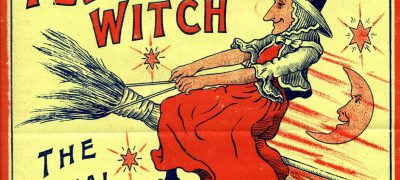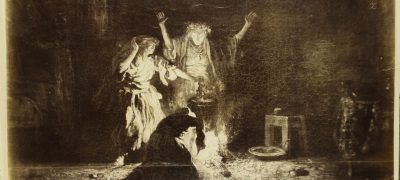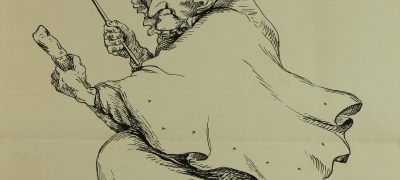Teachers' notes
This document collection includes various documents relating to the witch craze in 17th century England. It allows students and teachers to develop their own questions and lines of historical enquiry on the nature of beliefs and behaviours, the role of the authorities and legal restraint, attitudes of communities or the role of women in society.
Through the documents students could explore questions such as how the persecution of witches was instigated, encouraged or enabled by the authorities or communities. How was the church involved? What type of people experienced persecution? Were some people pretending to be witches and why? Were both men and women involved? What was the possible impact of printed material on the witch craze? What general conclusions can students draw from considering this group of documents as a whole? How could study of the topic be extended?
It is hoped that these documents will offer students a chance to develop their powers of evaluation and analysis concerning aspects of popular culture and the witch craze in the 17th century and beyond. They might consider how these aspects have been interpreted in debates between historians and social scientists.
Taking it further students could be encouraged to find out more about the legacy of medieval and 15th century attitudes, beliefs and reactions to heresy, demonology and witches (e.g. Nider’s Formicarius) and what ultimately prompted decriminalisation.
Finally teachers could also use the collection to develop their own resources or encourage students to ‘curate’ their own ‘exhibition’ of the most significant sources on the topic. Please note that some sources contain sensitive material so use with care. Transcripts have been modernised in terms of spelling, with some additional punctuation added, some words have been defined within the text using square brackets. The lines in the transcripts are numbered to help users find their place when using to the original document.
Introduction
Dr Hannah Worthen, University of Hull
In early modern society there was a genuine fear of witchcraft and those suspected of consorting with the Devil could be put on trial and executed, occasionally in large numbers. From a modern perspective, the so-called ‘witch crazes’ can be difficult to understand. What sorts of people were accused of witchcraft? Why? How genuine were people’s suspicions? And what evidence was required for somebody to be executed? This resource helps to highlight some of the reasons why people were accused of witchcraft, who they were, and what happened to them as a result.
The fear of witches, witchcraft, and bewitchment originated in the medieval period when the Roman Catholic Church taught the dangers of witchcraft and printed texts, such as Malleus Maleficarum, illustrated the horrors of witchcraft. Witchcraft remained within the popular imagination into the early modern period, and after the Reformation it was still perceived to be a threat to the church and a well-ordered society. In times of uncertainty and upheaval witchcraft accusations would increase, and so there were often more witchcraft accusations during times of war and famine. General fears of witchcraft within society could also feed into specific accusations that originated within local community so that somebody disliked by their neighbours might be more vulnerable to being accused. In this resource there are lots of examples of ordinary people being accused of witchcraft by their neighbours. For example, Joan Guppie, whose neighbours believed her to be a witch and who took it upon themselves to try to punish her. There were also waves of accusations as groups of people were rounded up and put on trial together such as the Lancaster witches: a group of women who were tried together 20 years after the famous Pendle witch trials.
Witchcraft was particularly associated with women in the early modern period, and this continued into the modern era. In this resource there are several examples of modern images of witches who were women, often riding on broomsticks with a pointy hat: the image that we most associate with witchcraft today. However, an image of a witch taken from the seventeenth century shows some aspects of this witchcraft stereotype have been around for a long time. Women were more likely to be accused because of the church’s teaching that women were the weaker sex, seen as more vulnerable to the seductive powers of the Devil. Therefore, accusations of witchcraft became another way for women to be oppressed in early modern society. However, men were also suspected and accused of witchcraft, such as the male witches of Edmonton.
Lots of the sources in this resource are legal documents that relate to witchcraft trials. When a person was accused of witchcraft an Indictment would be drawn up, then witnesses would be called, an examination of the accused would be carried out and sometimes a confession drawn out, possibly with torture. Those found guilty would be executed. Not all accusations of witchcraft were believed, however. Even in this period, people were suspicious of attempts to pretend to be bewitched, or pretending to be a witch, and were aware that not all cases of witchcraft were genuine. For example, in this resource is the case of Katherine Malpas, who’s relatives pretended she was a witch for their own financial benefit.
Witchcraft caused great fear within society, but it also often became a function of normal life. Somebody new to a community might be accused of witchcraft because his or her neighbours were suspicious of them. Sometimes a person might pretend to be bewitched because it was a way of making money. People were more suspicious of witchcraft when the harvest failed, as they looked to find a cause. Witchcraft trials became ways for grievances and disputes to be aired, and for people to stand in testimony for or against their neighbours. In many ways, therefore, understanding the history of witchcraft tells us less about the supernatural than it does about the realities of everyday life for ordinary people in early modern England.
External links
This 30 minute talk, which features some of the documents within this collection, was delivered online on Friday 23 October 2020 by Dr Jessica Nelson. Jessica is Head of Collections (Medieval, Early Modern, Maps & Legal) at The National Archives:
Take a look at our blog post detailing the story of some of the documents in this collection: https://blog.nationalarchives.gov.uk/an-examination-of-witches-in-the-17th-century/
Listen to our podcast ‘On the Record: Trials’: https://media.nationalarchives.gov.uk/index.php/trials-ordeal-and-combat/
Using interactive mapping, trace the story of the witch craze in Scotland: https://www.citylab.com/life/2019/10/witch-trial-scotland-history-witchcraft-persecution-europe/598951/?utm_source=twb
Use the Edinburgh University Survey of Scottish Witchcraft Database which includes nearly 4,000 records of accused witches and documents on witchcraft belief: https://witches.shca.ed.ac.uk/
A short collection of primary sources on the witch craze, including an extract from the Papal Bull of 1484 and Nider’s Formicarius: https://sourcebooks.fordham.edu/source/witches1.asp
The Old Bailey Online website provides detailed proceedings (although not entire transcripts) for trials at the London central criminal court. Search for witchcraft cases: (for the period 1679 to 1772): https://www.oldbaileyonline.org/
Blog Norfolk Record Office: https://norfolkrecordofficeblog.org/2019/10/28/elizabeth-bradwell-accused-of-witchcraft-and-executed-in-great-yarmouth-1645/
Back to top
